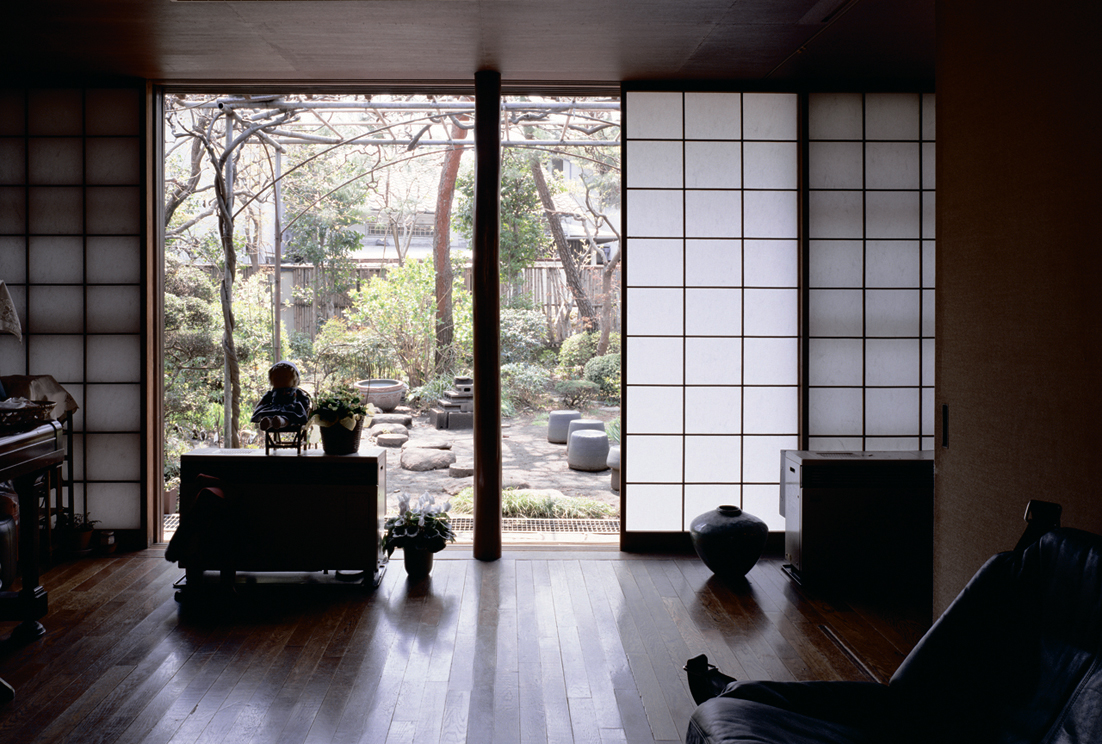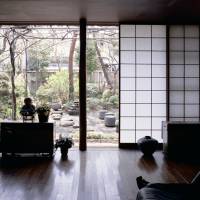In the 1960s, architect Kazuo Shinohara made a famous comment in Shinkenchiku magazine: "Residence is art. ... Residence should be outside of what is believed as architecture, it should rather be considered as a form of art, like paintings and sculptures." A bold statement considering that unlike paintings or sculptures, function is usually of the priority of architecture, and that most buildings cannot be moved.
This makes curator Rui Asanuma's display design of Hachioji Yume Art Museum's current exhibition, "Legendary Houses in Postwar Japan: Provocative/Introspective," an important part of the visitor's experience. Giant white sheets, hung from ceiling to floor, screen videos and slide shows to accompany a wealth of other images, documents and architectural plans. It's an ideal way to show off the show's subject and offers visitors a virtual walk through the residences.
Sixteen buildings from the 1950s to '70s are presented, with notes on construction methods, materials and the lifestyles of former and current residents. It starts with architect Kenzo Tange's minimalist personal residence 1953 "House," which reflects his famous motto, "What is aesthetic is functional," and represents the beginning of a movement that went on to reinterpret traditional Japanese wooden architecture.
Other featured residences built in the '50s are similarly minimal, such as Makoto Masuzawa's 1953 "Residence for Mr. H.Planned by Center Core System," for which the owner told the architect that all he needed was a space where he could effortlessly "eat, sleep and go to the bathroom."
Kiyonori Kikutake's 1958 "Sky House," reveals a shift toward the metabolism movement, which by the '70s was in full swing. The metabolists focused on organic architecture that had the ability to grow and change, and "Sky House" featured a kitchen and bathroom that could be moved to match the needs of the resident's family.
More than half of the homes featured in the exhibition were built in the '70s when architects saw an importance in interiors. Kazunari Sakamoto, for example, described his 1970 "Machiya in Minase" as a "closed box" from the urban jungle, its exterior covered in silver paint, but its interior featuring the a rustic use of concrete and wood. For those interested, the museum is offering free tours of the "Machiya," which is in Hachioji, and "Hara House" by Hiroshi Hara in Machida.
"Legendary Houses in Postwar Japan: Provocative/Introspective" at Hachioji Yume Art Museum runs from June 14 to July 20; 10 a.m.-7 p.m. ¥500. Closed Mon. www.yumebi.com


















With your current subscription plan you can comment on stories. However, before writing your first comment, please create a display name in the Profile section of your subscriber account page.